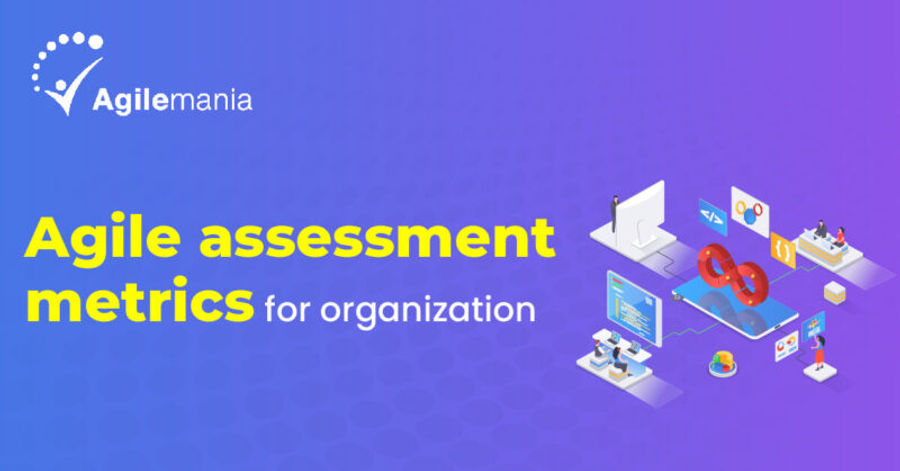CATEGORY LIST
Popular Post
-
![Agilemania Blog]()
Continuous Delivery Pipeline – Sca...
Sep 22nd 2022 - BY Agilemania
-
![Agilemania Blog]()
Sep 29th 2019 - BY
-
![Agilemania Blog]()
Agile Transformation and High-Performance...
Dec 6th 2018 - BY Agilemania
TAGS

- Agilemania
- Aug 3rd 2016
Why assessment needed?
Assessment is important to design approach for agile adoption and helpful for organization to measure effectiveness. Purpose should be to identify improvement areas and should evolve over the period. But many time organizations have to prepare budget for agile adoption in advance to get approval for expenses from board. They engage vendors to perform assessment to estimate cost. There is no harm in doing it as long as vendor act as facilitator than judge. Although I personally believe that need of agility should get established before assessment start so result get aligned with need. Only assessment may not help in understanding reality at ground. Arguments given in support of assessment always get liked with estimation of implementation cost. Some estimate needed for budgetary approval if organization culture demands. Another argument is to design customized training, coaching and mentoring based on reality as every organization culture is different.How to design assessment?
What will be the parameters for assessment? I believe at the highest level, the Assessment approach should assesses agility on four dimensions:- Revenue of an organization (Top Level)
- Operating cost of an organization (Bottom Level)
- Customer satisfaction (CSAT)
- Employee Satisfaction (ESAT)
How these assessments can be designed pointing back to above four dimensions?
Enterprise Agility (Top Line, Bottom Line, CSAT, ESAT) – culture, structure, transparency, learning, innovation and social Suggested activities – Causal loop diagram, Impact Mapping, Skilled Facilitator workshop and some game related to context switching, queueing theory etc. Business Agility (Top Line, CSAT) – customer engagement, collaboration, time to market, service and revenue Suggested activities – Impact mapping, game for time to market, empirical process control and prioritization etc. Team Agility (Bottom Line, ESAT) – team building, automation, innovation, technical Excellency, learning and sharing Suggested activities – Game related to 5 dysfunctions of team, working without titles, test first vs code first, emergent design and value stream mapping etc.Samples metrics that can be further modified based on organization culture.
Team Agility:-- Team is meeting daily to assess progress
- Team members trust on each other
- Team owns success and failure as team
- Team owns code collectively and not individually
- Team members estimate PBIs collectively
- Everyone in team has gone through basic agile workshop
- Everyone agreed to work in self-managing team
- Everyone understand the value of collaboration
- Team conducting regular retrospective to improve processes
- Team care about whole product and not just individual goal
- Everyone from team joining Product Backlog Refinement
- Business representative attending Refinement Session
- PBIs are ready for development prior to development start
- Business representative available for clarification whenever team wanted
- Business representative joins Planning session
- Team always define clear goal for development during Planning
- Business representative understand cost of rework
- Business representative care about cost of delay
- Business representative measure time to market
- Business representative prioritize PBIs based on business value
- Team has adopted Continuous Integration practices
- Team write unit test before writing code
- Team practice pair programming and peer review
- Team automate test for regression and integration testing
- Team is focusing on continuous delivery
- No of defects per story
- First time right
- release Rollback
- Cycle time for defects/ production change
- Lead time for defects/ production change
- Investment on learning
- Culture sanitization program
- Transparency in performance appraisal
- Transparency in promotion
- Reduction of roles
- Time for innovation
- Promoting innovative ideas
- Platform to share knowledge
- Building leadership
- Removing fear

Agilemania
Agilemania, a small group of passionate Lean-Agile-DevOps consultants and trainers, is the most trusted brand for digital transformations in South and South-East Asia.
Sign up for Agilemania Newsletter
Stay updated with the latest Agile & Scrum trends.
CATEGORY LIST
Popular Post
-
![Agilemania Blog]()
Continuous Delivery Pipeline – Sca...
Sep 22nd 2022 - BY Agilemania
-
![Agilemania Blog]()
Sep 29th 2019 - BY
-
![Agilemania Blog]()
Agile Transformation and High-Performance...
Dec 6th 2018 - BY Agilemania
TAGS
Agilemania is a group of passionate Lean-Agile-DevOps consultants and trainers focused on delivering measurable, sustainable results for our clients.
Connect with us on Social Media
Knowledge Area
Agilemania Technologies Private Limited © 2024 All rights reserved.

Provide Below Information!
One of our representative will get back to you shortly.






